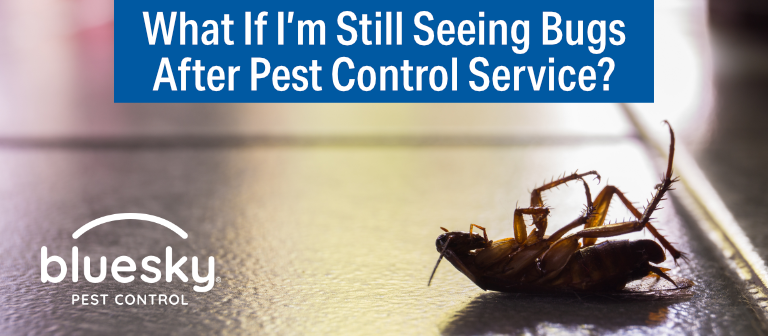Some Known Facts About Eco Bed Bug Exterminators Dc.
Some Known Facts About Eco Bed Bug Exterminators Dc.
Blog Article
Eco Bed Bug Exterminators Dc for Beginners
Table of ContentsThe 2-Minute Rule for Eco Bed Bug Exterminators DcThe Best Strategy To Use For Eco Bed Bug Exterminators DcFacts About Eco Bed Bug Exterminators Dc Uncovered9 Simple Techniques For Eco Bed Bug Exterminators DcIndicators on Eco Bed Bug Exterminators Dc You Need To Know
Due to the fact that pesticides are hazardous, they are likewise potentially harmful to people, animals, other organisms, and the setting. For that reason, people who use chemicals or routinely come in contact with them should comprehend the loved one poisoning, possible health and wellness impacts, and preventative steps to decrease direct exposure to the items they use. Hazard, or threat, of making use of chemicals is the possibility for injury, or the level of threat involved in making use of a pesticide under a given collection of conditions.
Applicators can minimize or virtually remove direct exposure-- and hence decrease threat-- by adhering to the label instructions, utilizing individual protective apparel and equipment (PPE), and taking care of the pesticide effectively. More than 95 percent of all chemical exposures come from facial direct exposure, primarily to the hands and forearms. By putting on a pair of unlined, chemical-resistant gloves, this sort of direct exposure can be virtually removed.
The hazardous impacts that occur from a single direct exposure by any path of access are labelled "acute results." The four paths of direct exposure are dermal (skin), breathing (lungs), oral (mouth), and the eyes. Acute toxicity is figured out by examining the facial poisoning, inhalation toxicity, and dental toxicity of guinea pig.
The 6-Minute Rule for Eco Bed Bug Exterminators Dc
Acute poisoning is gauged as the quantity or concentration of a toxicant-- the a.i.-- required to kill 50 percent of the pets in an examination populace. This step is typically shared as the LD50 (dangerous dosage 50) or the LC50 (dangerous concentration 50). Furthermore, the LD50 and LC50 values are based upon a single dosage and are tape-recorded in milligrams of chemical per kg of body weight (mg/kg) of the examination animal or partially per million (ppm).
The lower the LD50 or LC50 value of a chemical item, the higher its toxicity to humans and animals. Pesticides with a high LD50 are the least toxic to human beings if made use of according to the instructions on the product label. The persistent toxicity of a pesticide is determined by subjecting guinea pig to long-lasting exposure to the energetic ingredient.
The chronic poisoning of a chemical is much more challenging than acute poisoning to figure out with laboratory analysis. Products are categorized on the basis of their relative severe poisoning (their LD50 or LC50 values). Chemicals that are identified as highly toxic (Toxicity Classification I) on the basis of either oral, facial, or breathing poisoning need to have the signal words DANGER and POISON published in red with a head and crossbones symbol prominently presented on the front panel of the bundle tag.
The severe (solitary dosage) dental LD50 for pesticide items in this group varies from a trace total up to 50 mg/kg. Direct exposure of a few drops of a material taken by mouth can be fatal to a 150-pound individual. https://pubhtml5.com/homepage/hysas/. Some pesticide items have just the signal word DANGER, which tells you absolutely nothing regarding the severe poisoning, simply that the product can trigger severe eye damages or serious skin irritation
The Eco Bed Bug Exterminators Dc PDFs
In this group, the intense oral LD50 ranges from 50 to 500 mg/kg. A tsp to an ounce of this product could be deadly to a 150-pound person (exterminator DC). Chemical items identified as either somewhat poisonous or relatively safe (Poisoning Categories III and IV) are required to have the signal word CAUTION on the chemical tag

All pesticide poisoning worths, including the LD50, can be found on the product's Product Safety Information Sheet (MSDS) - pest control Washington DC. Pesticide labels and MSDS can be gotten from retailers or produces. On top of that, many products also have details that can be located on the net. The signs of chemical poisoning can range from a light skin inflammation to coma or also fatality.
Due to the fact that of prospective wellness worries, pesticide customers and trainers should recognize the common indicators and signs of pesticide poisoning. The results, or signs and symptoms, of pesticide poisoning can be extensively defined as either topical or systemic.
Some Known Factual Statements About Eco Bed Bug Exterminators Dc
Dermatitis, or inflammation of the skin, is approved as one of the most commonly reported topical effect connected with chemical direct exposure. Signs and symptoms of dermatitis array from reddening of the skin to rashes and/or sores. Some see page people often tend to cough, hiss, or sneeze when exposed to pesticide sprays. Some people respond to the solid smell and bothersome impacts of oil distillates utilized as providers in pesticide items.
This sign typically subsides within a few minutes after a person is gotten rid of from the direct exposure to the irritant. A response to a pesticide item that triggers someone not just to sneeze and cough yet likewise to create severe intense respiratory symptoms is a lot more likely to be a real hypersensitivity or allergic reaction.
Systemic effects are fairly different from topical results. They frequently occur away from the initial point of call as a result of the chemical being absorbed right into and dispersed throughout the body. Systemic results usually include nausea, vomiting, tiredness, frustration, and digestive tract disorders. In advanced poisoning instances, the individual might experience adjustments in heart rate, trouble breathing, convulsions, and coma, which might lead to fatality.
Report this page